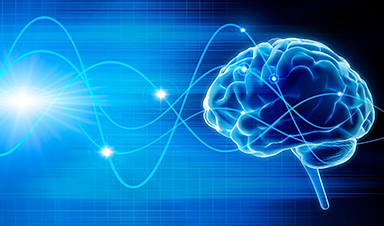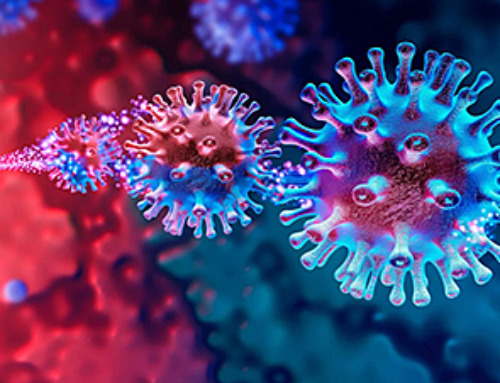- First study to show that delivering information at the natural tempo of our neural pulses accelerates our ability to learn.
- Participants who received a simple 1.5-second visual cue at their personal brainwave frequency were at least three times faster when it came to improving at a cognitive task.
- When participants were tested again the next day, those who had improved faster were still just as good – the learning stuck.
- Priming brains for optimal rhythms could help us remain quick learners throughout life, help people with learning difficulties, and give professionals an edge in training simulations, according to neuroscientists.
Scientists have shown for the first time that briefly tuning into a person’s individual brainwave cycle before they perform a learning task dramatically boosts the speed at which cognitive skills improve.
Calibrating rates of information delivery to match the natural tempo of our brains increases our capacity to absorb and adapt to new information, according to the team behind the study.
University of Cambridge researchers say that these techniques could help us retain “neuroplasticity” much later in life and advance lifelong learning.
“Our brain’s plasticity is the ability to restructure and learn new things, continually building on previous patterns of neuronal interactions. By harnessing brainwave rhythms, it may be possible to enhance flexible learning across the lifespan, from infancy to older adulthood,” Kourtzi said.
The findings, published in the journal Cerebral Cortex, will be explored as part of the Centre for Lifelong Learning and Individualised Cognition: a research collaboration between Cambridge and Nanyang Technological University (NTU), Singapore.
The neuroscientists used electroencephalography – or EEG – sensors attached to the head to measure electrical activity in the brain of 80 study participants, and sample brainwave rhythms.
The team took alpha waves readings. The mid-range of the brainwave spectrum, this wave frequency tends to dominate when we are awake and relaxed.
Alpha waves oscillate between eight to twelve hertz: a full cycle every 85-125 milliseconds. However, every person has their own peak alpha frequency within that range.
Scientists used these readings to create an optical “pulse”: a white square flickering on a dark background at the same tempo as each person’s individual alpha wave.
Participants got a 1.5-second dose of personalized pulse to set their brain working at its natural rhythm – a technique called “entrainment” – before being presented with a tricky quick-fire cognitive task: trying to identify specific shapes within a barrage of visual clutter.
The learning rate for those locked into the right rhythm was at least three times faster than for all the other groups. When participants returned the next day to complete another round of tasks, those who learned much faster under entrainment had maintained their higher performance level.
“It was exciting to uncover the specific conditions you need to get this impressive boost in learning,” said first author Dr. Elizabeth Michael, now at Cambridge’s Cognition and Brain Sciences Unit.
“The intervention itself is very simple, just a brief flicker on a screen, but when we hit the right frequency plus the right phase alignment, it seems to have a strong and lasting effect.”
Importantly, entrainment pulses need to chime with the trough of a brainwave. Scientists believe this is the point in a cycle when neurons are in a state of “high receptivity.”
“We feel as if we constantly attend to the world, but in fact, our brains take rapid snapshots and then our neurons communicate with each other to string the information together,” said co-author Prof Victoria Leong, from NTU and Cambridge’s Department of Paediatrics.
Professor Zoe Kourtzi, head of the Adaptive Brain Lab and Professor of Experimental Psychology at the University of Cambridge. Credit: University of Cambridge
“Our hypothesis is that by matching information delivery to the optimal phase of a brainwave, we maximize information capture because this is when our neurons are at the height of excitability.”
Previous work from Leong’s Baby-LINC lab shows that brainwaves of mothers and babies will synchronize when they communicate. Leong believes the mechanism in this latest study is so effective because it mirrors the way we learn as infants.
“We are tapping into a mechanism that allows our brain to align to temporal stimuli in our environment, especially communicative cues like speech, gaze, and gesture that are naturally exchanged during interactions between parents and babies,” said Leong.
“When adults speak to young children they adopt child-directed speech – a slow and exaggerated form of speaking. This study suggests that child-directed speech may be a spontaneous way of rate-matching and entraining the slower brainwaves of children to support learning.”
The researchers say that, while the new study tested visual perception, these mechanisms are likely to be “domain general”: applying to a wide range of tasks and situations, including auditory learning.
They argue that potential applications for brainwave entrainment may sound like the stuff of science fiction, but are increasingly achievable. “While our study used complex EEG machines, there are now simple headband systems that allow you to gauge brain frequencies quite easily,” said Kourtzi.
“Children now do so much of their learning in front of screens. One can imagine using brainwave rhythms to enhance aspects of learning for children who struggle in regular classrooms, perhaps due to attentional deficits.”
Other early applications of brainwave entrainment to boost learning could involve training in professions where fast learning and quick decision-making is vital, such as pilots or surgeons. “Virtual reality simulations are now an effective part of training in many professions,” said Kourtzi.
“Implementing pulses that sync with brainwaves in these virtual environments could give new learners an edge, or help those retraining later in life.”
News
COVID-19 still claims more than 100,000 US lives each year
Centers for Disease Control and Prevention researchers report national estimates of 43.6 million COVID-19-associated illnesses and 101,300 deaths in the US during October 2022 to September 2023, plus 33.0 million illnesses and 100,800 deaths [...]
Nanomedicine in 2026: Experts Predict the Year Ahead
Progress in nanomedicine is almost as fast as the science is small. Over the last year, we've seen an abundance of headlines covering medical R&D at the nanoscale: polymer-coated nanoparticles targeting ovarian cancer, Albumin recruiting nanoparticles for [...]
Lipid nanoparticles could unlock access for millions of autoimmune patients
Capstan Therapeutics scientists demonstrate that lipid nanoparticles can engineer CAR T cells within the body without laboratory cell manufacturing and ex vivo expansion. The method using targeted lipid nanoparticles (tLNPs) is designed to deliver [...]
The Brain’s Strange Way of Computing Could Explain Consciousness
Consciousness may emerge not from code, but from the way living brains physically compute. Discussions about consciousness often stall between two deeply rooted viewpoints. One is computational functionalism, which holds that cognition can be [...]
First breathing ‘lung-on-chip’ developed using genetically identical cells
Researchers at the Francis Crick Institute and AlveoliX have developed the first human lung-on-chip model using stem cells taken from only one person. These chips simulate breathing motions and lung disease in an individual, [...]
Cell Membranes May Act Like Tiny Power Generators
Living cells may generate electricity through the natural motion of their membranes. These fast electrical signals could play a role in how cells communicate and sense their surroundings. Scientists have proposed a new theoretical [...]
This Viral RNA Structure Could Lead to a Universal Antiviral Drug
Researchers identify a shared RNA-protein interaction that could lead to broad-spectrum antiviral treatments for enteroviruses. A new study from the University of Maryland, Baltimore County (UMBC), published in Nature Communications, explains how enteroviruses begin reproducing [...]
New study suggests a way to rejuvenate the immune system
Stimulating the liver to produce some of the signals of the thymus can reverse age-related declines in T-cell populations and enhance response to vaccination. As people age, their immune system function declines. T cell [...]
Nerve Damage Can Disrupt Immunity Across the Entire Body
A single nerve injury can quietly reshape the immune system across the entire body. Preclinical research from McGill University suggests that nerve injuries may lead to long-lasting changes in the immune system, and these [...]
Fake Science Is Growing Faster Than Legitimate Research, New Study Warns
New research reveals organized networks linking paper mills, intermediaries, and compromised academic journals Organized scientific fraud is becoming increasingly common, ranging from fabricated research to the buying and selling of authorship and citations, according [...]
Scientists Unlock a New Way to Hear the Brain’s Hidden Language
Scientists can finally hear the brain’s quietest messages—unlocking the hidden code behind how neurons think, decide, and remember. Scientists have created a new protein that can capture the incoming chemical signals received by brain [...]
Does being infected or vaccinated first influence COVID-19 immunity?
A new study analyzing the immune response to COVID-19 in a Catalan cohort of health workers sheds light on an important question: does it matter whether a person was first infected or first vaccinated? [...]
We May Never Know if AI Is Conscious, Says Cambridge Philosopher
As claims about conscious AI grow louder, a Cambridge philosopher argues that we lack the evidence to know whether machines can truly be conscious, let alone morally significant. A philosopher at the University of [...]
AI Helped Scientists Stop a Virus With One Tiny Change
Using AI, researchers identified one tiny molecular interaction that viruses need to infect cells. Disrupting it stopped the virus before infection could begin. Washington State University scientists have uncovered a method to interfere with a key [...]
Deadly Hospital Fungus May Finally Have a Weakness
A deadly, drug-resistant hospital fungus may finally have a weakness—and scientists think they’ve found it. Researchers have identified a genetic process that could open the door to new treatments for a dangerous fungal infection [...]
Fever-Proof Bird Flu Variant Could Fuel the Next Pandemic
Bird flu viruses present a significant risk to humans because they can continue replicating at temperatures higher than a typical fever. Fever is one of the body’s main tools for slowing or stopping viral [...]





















